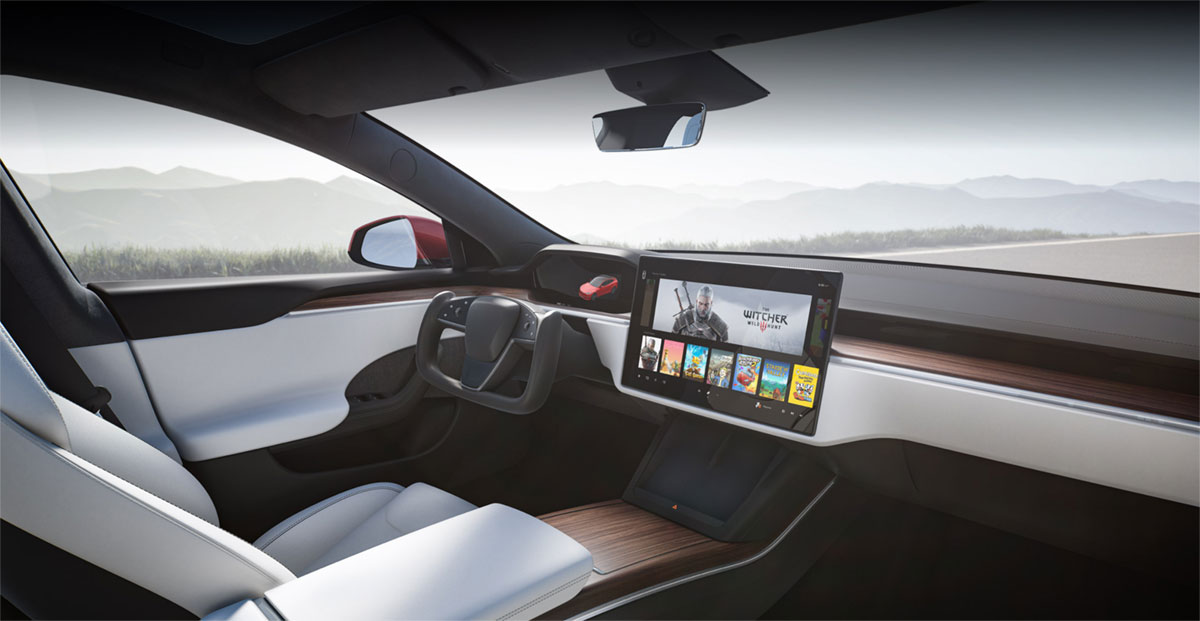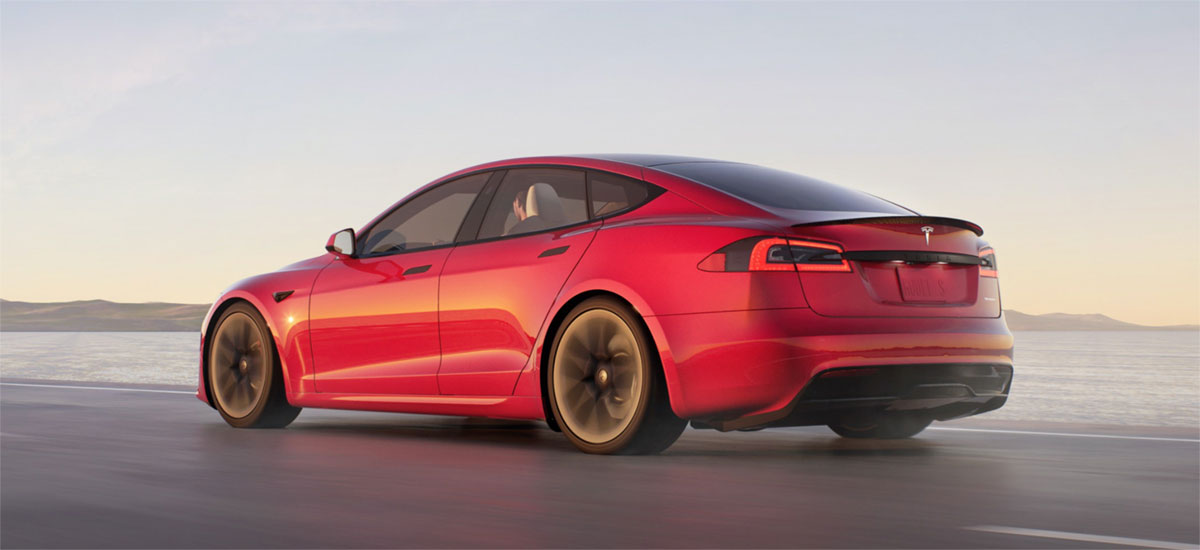According to Tesla CEO, Elon Musk, the company’s newly redesigned Model S and Model X will guess the intended drive direction of the vehicle based on the obstacles that it sees.
The technology will mean that the car will do away with the standard shifter but will include override buttons on the touchscreen.

After people saw images of the interior of the redesigned Model S – including the new futuristic steering wheel that looks like something right out of Hasselhoff’s Knightrider – the immediate question was “where is the shifter?” Controversial CEO, who loves dropping knowledge bombs on Twitter, took to the social network to answer the question:
No more stalks. Car guesses drive direction based on what obstacles it sees, context & nav map. You can override on touchscreen.
Sounds entirely safe and foolproof, right? In a normal vehicle, a driver would use the shifting stick to manually switch between the different drive modes on the car. Namely, shifting between Park, Reverse, Neutral, and Drive (PRND). In the new car, artificial intelligence in conjunction with the mapping and camera systems will use data and onboard information actually automatically select the relevant driving mode.

We’re sure that not everyone wants their car to “guess” whether it wants to go forward or backwards, so Electrek has provided a little more context and clarity on the situation:
The vehicle uses its Autopilot sensors to intelligently and automatically determine intended drive modes and select them. For example, if the front of Model S/X is facing a garage wall, it will detect this and automatically shift to Reverse once the driver presses the brake pedal.
If that idea entirely terrifies you and you want a futuristic car but not that futuristic, then the automatic selection will be able to be overridden via the car’s touchscreen. Forward-thinking companies, such as Tesla, are always trying to progress their products and remove what they believe to be “friction” from standard and accepted processes.
Driving purists who love the thrill of person-to-car interaction will likely be dead against this type of progression. However, a driver who wants to get from A to B with as little friction and as minimal interaction as possible will more embrace this feature.
You may also like to check out:
- Jailbreak iOS 14.4 Using Checkra1n, Here’s How-To [Guide]
- Download: iOS 14.4 Final IPSW Links, OTA Profile File Along With iPadOS 14.4 Out Now
- How To Downgrade iOS 14.4 The Easy Way [Tutorial]
- How To Fix Bad iOS 14 Battery Life Drain [Guide]
- Convert Factory Wired Apple CarPlay To Wireless Apple CarPlay In Your Car Easily, Here’s How
- iPhone 12 / Pro Screen Protector With Tempered Glass: Here Are The Best Ones
- Best iPhone 12, 12 Pro Case With Slim, Wallet, Ultra-Thin Design? Here Are Our Top Picks [List]
- Best iPhone 12 Mini Screen Protector: Here’s A List Worth Checking
- Best iPhone 12 Pro Max Screen Protector: Here Is A List Worth Checking
- Jailbreak iOS 14.2 Using Checkra1n, Here’s How-To [Guide]
- Apple Watch ECG App Hack: Enable Outside US In Unsupported Country On Series 5 & 4 Without Jailbreak
You can follow us on Twitter, or Instagram, and even like our Facebook page to keep yourself updated on all the latest from Microsoft, Google, Apple, and the Web.

